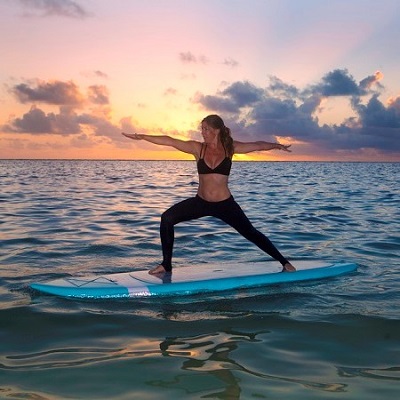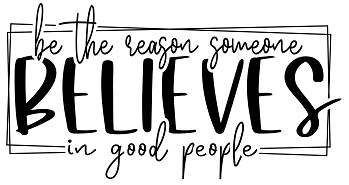 When you are a beginner at the art of yoga it can be extremely difficult to figure out which yoga type might be the best fit for you.
When you are a beginner at the art of yoga it can be extremely difficult to figure out which yoga type might be the best fit for you.
This list can help you decide if you want to go all out with your yoga practice or if you want something a little more low-key in your exercise regimen.
AcroYoga – The main idea for this type of yoga is for one person, who is known as the base, will support a partner, who is known as the flyer, while lying on his/her back and supporting the flyer with his/her legs. While the flyer is in the air, he/she will do various yoga poses. This type of yoga is generally done in groups.
Aerial Yoga – When you practice aerial yoga you have a portion of fabric suspending from the ceiling that keeps you above the floor. By using the fabric you will be able to support your body without causing it any stress when you stretch. This type of yoga is a great way for improving your core strength.
Aqua Yoga – Aqua yoga is very low impact so it is great for those who suffer from joint pain to increase their flexibility, mobility and strength. Because of the water, pain and discomfort is alleviated unlike when exercising on land. This type of yoga works great for those who have had a knee or hip replacement or suffer from arthritis.
Ashtanga Yoga – This type of yoga is extremely fast-paced and intense. You will perform a series of poses in the exact same order every time. It is physically challenging because you are moving constantly from one pose to another and it is recommended that the yoga is done daily.
Baptiste Power Vinyasa Yoga – This yoga style focuses on what is called the 5 Pillars and is extremely intense. You should be prepared to sweat with this one. The 5 Pillars focus on Breath, Heat, Flow, Gaze and Core Stabilization.
Bowspring Yoga – This style of yoga introduces participants to a new type of body alignment called “bowspring.” In these poses the knees are bent and the pelvis constantly tips forward to help maintain the curve in the spine. These are different from the traditional yoga poses that most people are familiar with.
Chair Yoga – This practice of yoga is helpful for anyone who cannot stand for a long period of time or who has trouble sitting down in the floor. There are several chair poses for this type of yoga so you’ll have plenty of range of motion without having to sit or stand for very long. Many seniors enjoy this type of yoga because they are getting the benefits of the yoga and they can still sit in their chair. People with limited mobility can practice chair yoga without any problems.
Forrest Yoga – The main idea of Forrest Yoga is performing dynamic asana series that will strengthen and purify your body by helping to release pain and emotions that have been previously pent-up. This will allow your body, mind and soul to heal those wounds. This intense workout focuses on strengthening the abdomen, deep breathing and inversions.
Hot Yoga – This style of yoga is practiced in a room with a temperature of 95 to 100 degrees. This helps the muscles loosen up better. You should also be prepared to sweat during the hot yoga practice. This practice is thought to be a cleansing experience for those participating. There are a series of 26 poses in hot yoga, but be aware, not every hot yoga class keeps within the set.
Hatha Yoga – This type of yoga is one that is slower and will help those just beginning yoga to understand the various yoga poses. It is comprised of many different types of physical yoga and is more gentle that other variations of yoga.
Integral Yoga – Much like Hatha yoga, integral is a very slower and gentler type of yoga. This type also works to integrate the body, mind and spirit so in some classes meditating or chanting might be included.
Iyengar Yoga – This practice focuses mainly on the alignment of the body. You will generally hold poses for a long period of time rather than using the motions of flow and moving from one pose to the next one. With Iyengar yoga the use of yoga blocks, blankets or straps might be used to aid in aligning of the body.
Modo Yoga – This form of hot yoga consists of a sequence of 40 yoga poses which include flow and ashtanga yoga. It is done in a room with a temperature of 95 – 100 degrees that will really make you sweat.
Power Yoga – Power yoga has the same intensity to it that Ashtanga yoga uses, however, a set in stone sequence is not used. The sequence can vary each time but it still maintains the portion of flow yoga moving from one pose to the next quickly.
Restorative Yoga – Restorative yoga uses blocks or blankets to help the body relax into different poses within several minutes so that it may stretch completely. In restorative yoga you will practice poses like a forward bend, twists or lying on a block to open up and relax the chest. You are encouraged to relax completely and stretch all of your muscles without stress to the body.
Stand-Up Paddle Yoga (SUP) – Stand-up paddle yoga is done while you are on a paddle board in the water. You have to keep your balance which gives your core and legs a great workout. Not only that, while you are on the paddleboard you get to take a look around at nature in the great outdoors. A hard work out, but well worth all the work put into it.
Vinyasa Yoga – Just like Hatha yoga, Vinyasa is a term that can be used to describe several classes of yoga. Its focus is on breath-synchronized movement which is more vigorous and includes a sequence of poses known as Sun Salutations. Every move is matched to each breath that is taken. You will go through a series of poses at the beginning and end of each class and continuous flow will work you through the middle of the class.
Yin Yoga – Yin Yoga is a routine that works to find a way to stretch the connective tissue in the body around the joints. This is a great method for those who have pain or discomfort in their joints or muscles.





